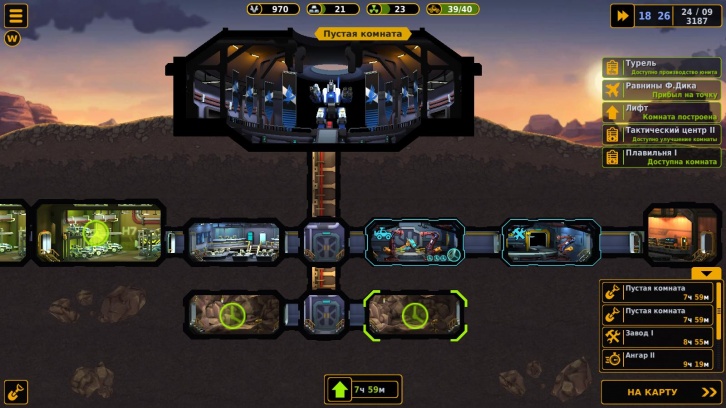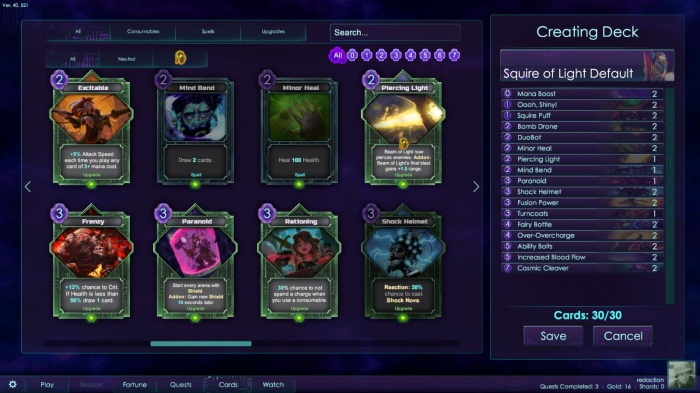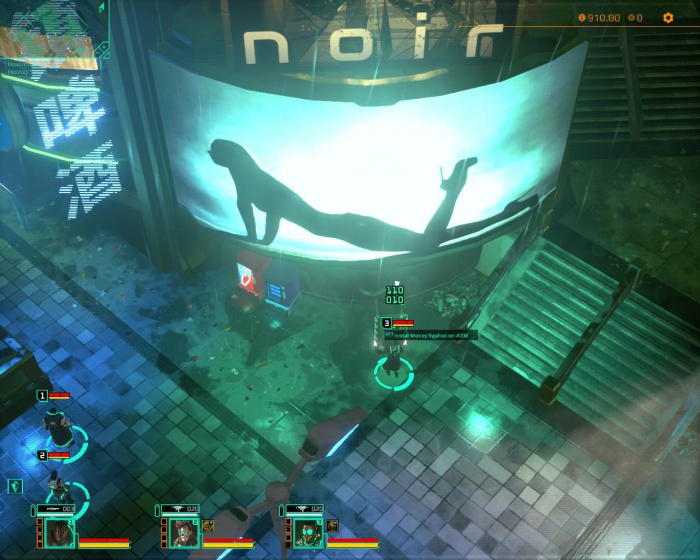The plot puts the action in the distant future, in the third millennium, where people actively use robots and furs. And some of them are actually merged with the machines and turned into a single whole aggressive, calling himself augment. With them, and we have to fight actively in combat using all sorts of techniques and robots.
At the beginning of the history of the protagonist rescues from certain death a senior lord and received as a reward the entire star system, which he will develop and defend against the invading augments along with his faithful companions – among them pilot a starship Omar technician Theia and tanker Vasily
. But despite the presence of the latter, is not ironic story in the spirit of Majesty 2 – everything seriously, and we are actually fighting for the survival of humanity.
Build, fight, act!
Actually, the gameplay Codex of Victory reminds both XCOM , of Massive Assault , and of Battle Worlds: Kronos .
First of all, we are developing our own underground base, pulling the new bays and erecting there any useful buildings on the central planet system – mine for the extraction of resources (gold, metal and uranium), for engineering hangars (more than them, the more “units” is available) , workshops producing “upgrades” for her, and so on.
Still more analogies with XCOMoccurs when you see how our spaceship flies from one sector to another planet, and the time at this point is running fast approaching a time when the new resource portion will go, it will be built another building, or made new technique.
At any moment it is possible to stop, to move from a global map of the world to the base menu. Pause is included and when we fly in any sector where it is necessary to perform the next mission.
Do the job, as you may have guessed, are directly on the terrain – step by step, of course. But it’s not tactical battles with fighters of different classes, in XCOM , – there are already appropriate comparisons with Battle Worlds: Kronos and Massive Assault.
Battles take place on maps, divided into hexes, which in their turn move the different types of equipment – tanks, flying drones and reconnaissance, helicopters, antiaircraft guns, jeeps with machine guns, some mechanical scorpions and the bottles (or rather, they immediately called the panoply) .
On everyone, whether it’s moving, attack or use abilities like a missile salvo, spent one action point. They are spent and to order the new “units” – and every piece of equipment has its own price.
Therefore, it is important to seize on the map strongholds that generate action points – the more of them, the more you make maneuvers and the more reinforcements to summon his move. However, infinitely ordered new recruits will not work: the maximum amount of equipment is limited. And each consumed unit is eliminated before the end of the battle.
Tactics is never too much
Mechanics in the Codex of Victory seems to be simple, clear, but this is exactly the case when the simple rules are opening a lot of room for different tactics and strategies.
Each mission is actually a puzzle where you have very well calculate every step, for example, to keep up with the progress of the enemy to shoot down a helicopter hovering drone to him, reinforcing the damage, or grab a reference point, not allowing it to produce reinforcement.
In the course are tricky maneuvers, allowing entice the enemy under fire from its turret or, say, to distract him by one group of “units” and the other to quickly move to the central database in order to destroy it. You also need to skillfully use the terrain (some hexes slow movements or overlapping review) and units.
You can bet on a less powerful, but fast equipment or, alternatively, on heavy tanks, supported by artillery. Better yet, combine both, and more.



